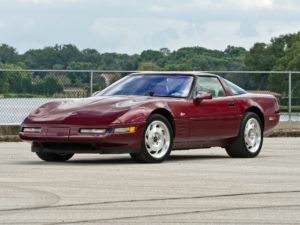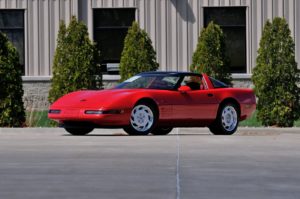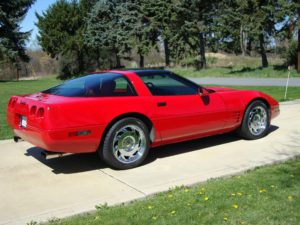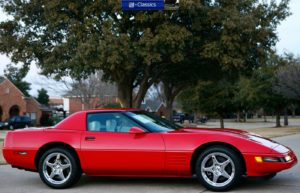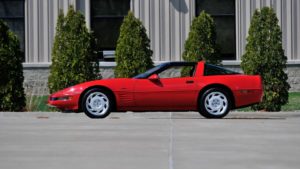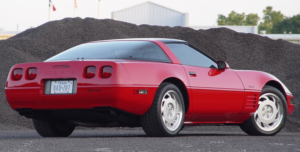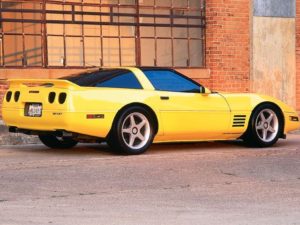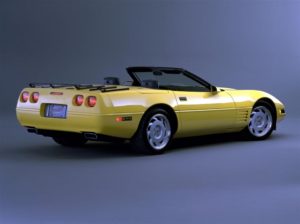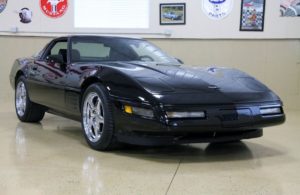Pricing: $33,635.00 (Coupe), $40,145 (Convertible)
Engine options: 350CI, 300 Horsepower, Multi-Port Fuel Injected LT1 V8 Small Block Engine.
Transmission: 4-speed automatic (standard), 6 speed manual (optional)
Top speed:
Units Produced: 20,479
Available Colors: White, Yellow, Black, Bright Aqua Metallic, Polo Green II Metallic, Black Rose Metallic, Dark Red Metallic, Quasar Blue Metallic, Bright Red
Highlights of the year:
Late in 1991, it was decided by General Motors that an all-new generation of Corvette would have to be put on hold until as late as 1998. While the next generation of Corvette was originally anticipated to arrive in 1995, poor sales prevented General Motors from expending the budgets necessary to develop a new model. Despite this economic downturn, GM did unveil a new concept car in January, 1992.
The car featured both a functional trunk and exposed headlights. Just as GM had showcased the Sting Ray III as one of their concept cars at the 1992 Detroit Auto Show, so too did they showcase a new powertrain for the 1992 Corvette.
In an effort to strike a happy medium between the moderately aggressive L98 and the incredibly powerful LT-5 (found in every ZR-1 Corvette) Chevrolet decided to roll out a standard pushrod small-block engine that would increase horsepower in the Corvette for the 1992 model year. And increase horsepower it did. In all, the new LT-1 V-8 small block engine produced a significant boost in power – 50 horsepower to be exact.
Now rated at a hearty 300 horsepower (at 5,000 rpm), with 300 lbs/ft of torque (at 4,000rpm), the LT-1 engines improved performance was the result of a number of improvements and refinements to the existing 5.7-liter V-8. Amongst these improvements was the introduction of computer-controlled engine timing, a new low-restriction exhaust system that utilized two catalytic converters and oxygen sensors (one for each cylinder bank), a new camshaft profile, a higher compression ratio (10.5:1), free-flow cylinder heads, and a revised multiport fuel-injection system. Cast iron exhaust manifolds were also introduced, replacing the previously used stainless-steel ones. This, along with other minor modifications, resulted in the LT-1 engine weighing 21 pounds more than its predecessor. To its credit, however, this engine was capable of providing impressive performance numbers even while operating on low octane gasoline.
The interior was also devoid of any real physical changes, although a number of subtle improvements were made. For 1992, the digital speedometer was relocated above the fuel gauge. Falling sales numbers weren’t isolated to the ZR-1 Corvette alone. In all, General Motors sold a mere 20,479 Corvettes during the course of its 1992 model year, which resulted in the lowest sales output since 1962.
Photos of the 1992 Corvette:
Sources:
https://www.corvsport.com/1992-c4-corvette/
https://www.corvsport.com/1992-c4-corvette-image-gallery/
